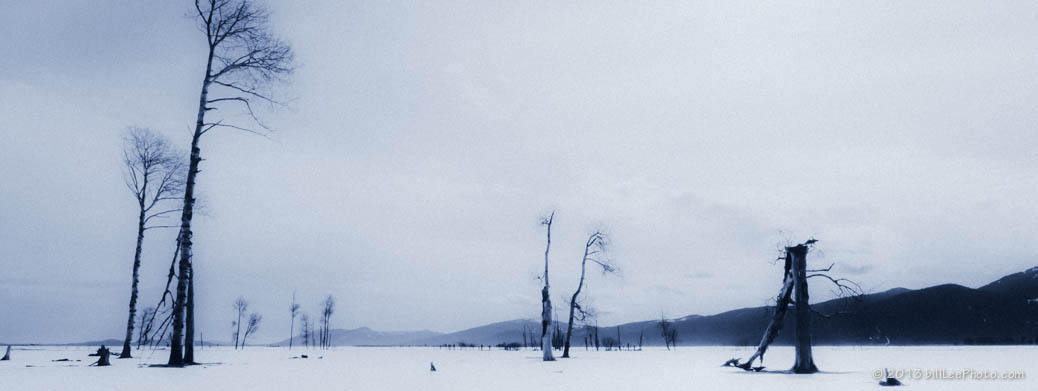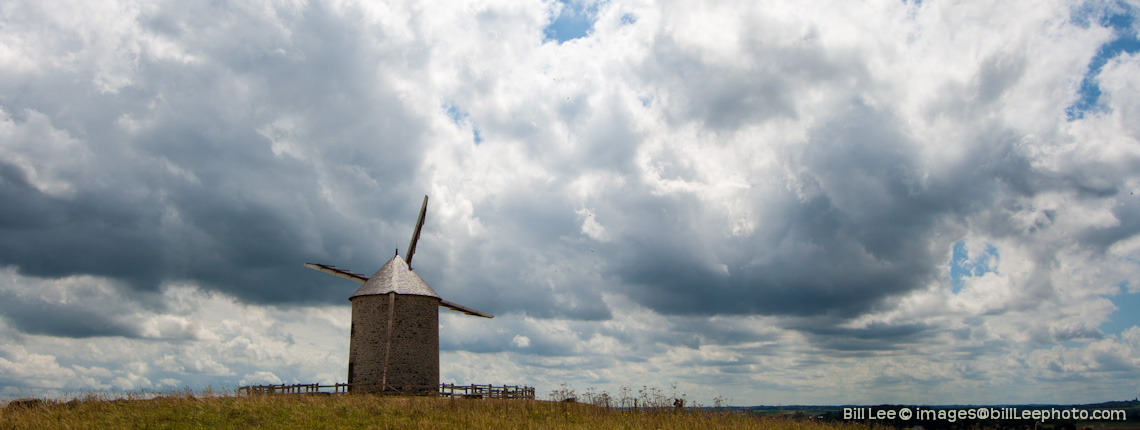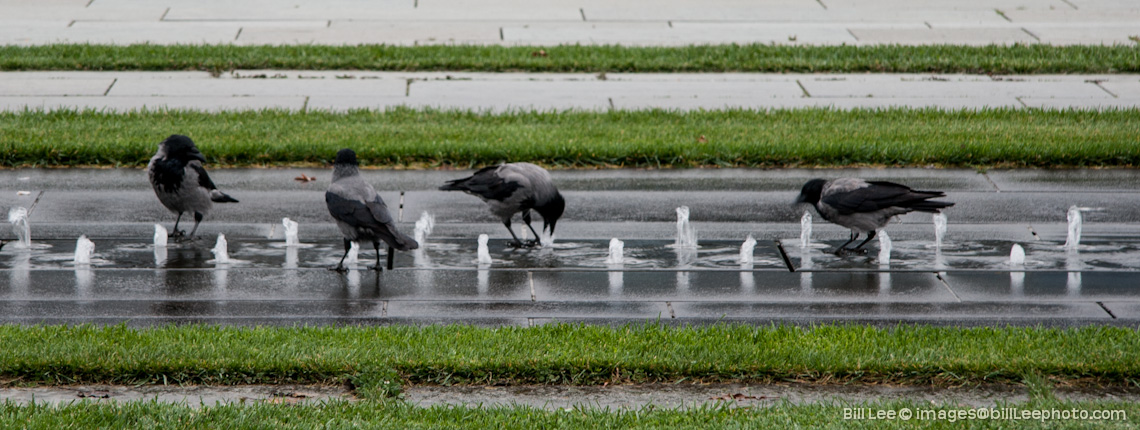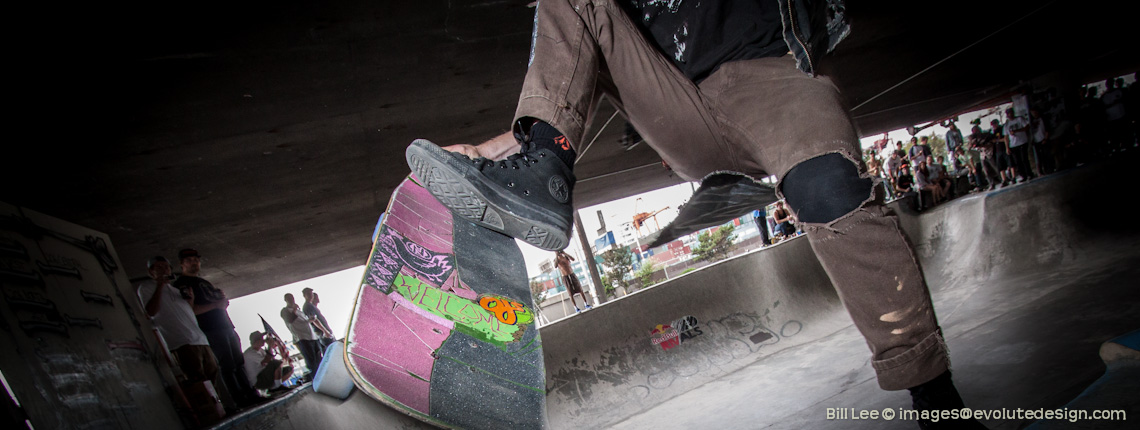Fixing Lightroom Catalogs Migrated from Windows to Mac
Generally, Lightroom Classic catalogs can be migrated and shared between Windows and Mac. However, since the OSs reference networked folders differently, you’ll have to match the necessary directories up, every time you want to work with them on the other operating system. Worse, if networked folders are referenced in Windows as UNC paths, under macOS, Lightroom Classic will yield an error when trying to match those folders to a valid folder. Since I could not find anyone else reporting this problem I had to fix it myself.
If image files are kept on a network drive, each time the catalog is opened on a different operating system from the previous, the images will not be found since network folders are referenced and mounted differently, between Windows and macOS. While Lightroom previews will show the images, editing or exporting them will not work without valid references to the backing image files. The solution is to right-click on the folder (or its parent) and select
Find Missing Folder…orUpdate Folder Location…and match the folder to the location recognized by the currently used operating system.
In Windows, network folders can be referenced by Universal Naming Convention (UNC) path names. These are paths that start with a double backslash (\\) followed by the server name and its share name, then the path to the sub-folder, if any. For example, if I have a network server named NAS_server and it shares my folders with the name, Photos, where my image folders reside. I can add a folder, \\NAS_server\Photos\Party pics to Lightroom.
MacOS does not recognize UNC network paths (not so universal is it?); so opening the catalog on macOS and attempting to update the folder location for an UNC folder, you’ll get an error (as shown in the image).

I did not find a way (or even a mention) of this problem. Most users may reference their network folders by first mapping their network folders to a drive letter so that their folders would be referenced as, for example, P:\Party pics—macOS allows updating of drive-based paths.
Since I couldn’t fix the program, I fixed the data. I discovered that the .lrcat file is a SQLite database file, so, I used SQLite utilities to fix the issue. The short story is that I was able to update the absolutePath column of the AgLibraryRootFolder table to a non UNC pathname—it could either be a correct path or any, even invalid, path, recognized by macOS. If the latter, the normal process of right-clicking on the folder and selecting Find Missing Folder… or Update Folder Location… to associate it with the alternate folder location.
The ugly details
For a catalog file, BillLeePhoto-v12.lrcat,
- To be safe, make sure that Lightroom is not open with the catalog you are about to change
- Backup the file, before making any manual changes (in case you break something or my advice, here, is bad)
- Get a list of
absolutePaths and their uniqueid_localvaluesecho 'SELECT id_local,name,absolutePath,relativePathFromCatalog
FROM "AgLibraryRootFolder";'
| sqlite3 -header -box BillLeePhoto-v12.lrcat - Note the
id_localvalue for theabsolutePathyou want to update and, as a check, select just that record:echo 'SELECT id_local,name,absolutePath,relativePathFromCatalog
FROM "AgLibraryRootFolder"
WHERE "id_local" = 123456;'
| sqlite3 -header -box BillLeePhoto-v12.lrcat - Now, update the record’s
absolutePathcolumn:echo 'UPDATE "AgLibraryRootFolder"
SET absolutePath = "/Volumes/Photos/Party pics/"
WHERE "id_local" = 123456;'
| sqlite3 -header -box BillLeePhoto-v12.lrcat - As, in step 4., output the record to ensure that it was updated properly
Now it’s safe to reopen the catalog with Lightroom Classic.
Understanding Lens Features’ Abbreviations
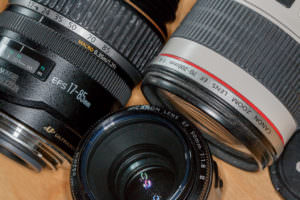 Every company has its own feature branding. It is confusing keeping this straight within your favorite brand, let alone when looking at other brands. This applies to understanding common lens features when comparing OEM lenses of independent manufacturers. The following enumerates some of these key lens features and identify the branding letters.
Every company has its own feature branding. It is confusing keeping this straight within your favorite brand, let alone when looking at other brands. This applies to understanding common lens features when comparing OEM lenses of independent manufacturers. The following enumerates some of these key lens features and identify the branding letters.
I will focus on key OEM brands, Canon and Nikon, but may add information for other brands as I find them. I’ve chosen to cover the more popular independent lens companies, Sigma and Tamron, as well.
| Canon | Nikon | Tamron | Sigma | |
|---|---|---|---|---|
| Full-frame coverage lens | EF – Electrofocus | AF, AF-S, FX | Di | DG |
| Crop-sensor coverage-only | EF-S | DX | Di-II | DC |
| Optical/mechanical image stabilization | IS – image stablilization | VR – vibration reduction | VC – vibration compensation | OS – optical stabilization |
| Internal focusing lens | IF | IF | IF | |
| Quiet focusing motor | USM – Ultrasonic motor, STM | SWM | USD | HSM – Hyper Sonic Motor |
| Low dispersion | LD, HID | LD, ED, UD | LD, XLD, HID | SLD, ELD, FLD |
| Tilt-shift | TS | PC | ||
| Premium / Professional | L – Luxury (red ring) | (gold ring) | SP | EX |
Full-frame Coverage Lens
“Full-frame” can be a mis-understood term. It refers to the 36mm×24mm frame size of “35mm” film cameras, the form-factor from which contemporary dSLR cameras have derived. This is a large-size sensor and has many advantages over “crop-sensor” dSLRs. For full-frame sensor cameras, it is important that lenses can “cover” the its large sensor. If you are using crop-sensor cameras, you can continue to use these lenses, should you ever move to cameras will full-frame sensors. (see “Crop-sensor” below).
Crop-sensor Coverage-only
A more popular class of dSLR cameras contain a sensor which is 1/1.5 or 1/1.6 the size of a full-size sensor (usually). Because of the smaller size, lenses designed to cover this smaller area can be made cheaper and more compact. If the camera has a full-sized sensor, then crop-sensor-specific lenses will not cover the full area of the sensor. The lens may not even fit on a full-frame sensor camera. (See “Full-frame, above).
Optical/mechanical image stabilization
Hand and camera shake can be counteracted by optical or mechanical “image stabilization”. If not built into a camera, it can be integrated into a lens, itself.
Internal focusing lens
It can be beneficial for lenses to be as static as possible during its operation. Those with internal focusing operation do not alter their external size as they are focused (lenses within the lens are moved internally, only).
Quiet Focusing Motor
Quiet shooting is always a desired feature; a quiet auto-focusing motor helps with this. As video recording becomes a more commonly used feature of dSLRs, a quiet focusing motor becomes even more important, to avoid being heard in a recording.
Low Dispersion
These designations highlight the use of exotic glass materials to minimize chromatic aberration (which results in colorations due to colors naturally focusing differently). Different glasses perform differently but are usually accompanied with higher costs due to rarity, purity, and manufacturing complexities.
Tilt-shift
Tilt-shift lenses are specialized lenses that allow manual manipulation of the geometry of the lens in a fashion which mimics large-format, bellows lenses.
Premium / Professional
This is a branding indicator for a lens by the manufacturer, a short-hand way to identify that the lens is the best of their best. Notably, Nikon does not have a separate designation for their premium lenses, but identifies them with a gold-ring around the front of their premium lenses.
Nikon Specific
If you are a Nikon user, it is important to notice whether the camera requires lenses to have their own focus motor. If your camera does not have a focus motor and the lens doesn’t either then auto-focus will not work. In other words, if your camera does not have a auto-focus motor, then you must use an AF-S lens (which have a built-in motors). Tamron designates such lenses as BIM.
Summary
I hope this makes it a bit easier to understand lens designations and make sense of them as you compare various lens features. There are many other designations that I did not cover, but these are the most common and the features which might be most important in understanding the differentiations between lenses. Did I miss anything important? Let me know.
Resources
What do all those cryptic number and letter codes in a lens name mean?
Understanding Tamron Lens Acronym
Matching Lightroom Mobile and Lightroom Desktop Images
I was on Lightroom, today, comparing pictures sync’d from Lightroom on my iPad with RAW files imported directly into Lightroom from an sd-card. Try as I might, I could not make adjustments to the RAW file match the settings of the one sync’d… until… (tl;dr, skip to the bottom)
Workflow
First, I should describe the “mobile” work-flow:
- Picture shot, RAW, on a Canon EOS dSLR
- Used wi-fi to transfer the image to my iPad with the Canon EOS Remote app and save desired images to the Camera Roll
- Opened the image in Lightroom Mobile on the iPad, edited, and made it available via cloud-synching
- I made adjustments to the image. I always enabled Lens Correction, but that never seemed to affect images. I assume the lens information was lost when images were saved as JPEG to the iPad.
Once I got home, I imported the RAW files directly into Lightroom Desktop:
- Used Lightroom import to add the images to a Catalog. I applied metadata defaults (name, copyright, etc.) and enable Lens Correction, during import
- Ensured that Lightroom Mobile images were synched
Comparing and Matching
I was then able to compared the two images on the big screen. I expected differences since I’d adjusted the images independently and due to the differences between JPEG and RAW—the image coming from the iPad was JPEG.
I was curious to see how different my adjusts to the same image may have been. I was surprised to discover that the differences weren’t only due to my editing choices.  Continue Reading
Continue Reading
Photo Albums are Here!
 This site has long needed an upgrade… it is supposed to be a photo site, after all, so it should show off more of my photos. Well, I finally built a piece that evolution: photo albums. It will allow me to make larger sets of my work viewable by others.
This site has long needed an upgrade… it is supposed to be a photo site, after all, so it should show off more of my photos. Well, I finally built a piece that evolution: photo albums. It will allow me to make larger sets of my work viewable by others.
The page works on a mobile device quite nicely, if I do say so myself. When viewing an album’s thumbnails, you can click on any image to see it full-screen. On a mobile device, you can swipe through the images, full-screen.
A lot of people expressed interest in the pictures I shot of the West Seattle bantam Wildcats, jr. football team, so those are most of the pictures that are there, now, until I better organize them. 
There are lots of changes coming to the album feature. Please feel free to call, email, or comment on what you like or don’t like about this.
If you are interested in adding this feature into your website, contact me.
Fill ’er up
 I’ve been getting into car-culture, lately. Well, you know, most of these machines still take old dinosaurs to keep them running. So when we stopped by an old station that was still selling gallons, less than 18¢ per, we had to fill up.
I’ve been getting into car-culture, lately. Well, you know, most of these machines still take old dinosaurs to keep them running. So when we stopped by an old station that was still selling gallons, less than 18¢ per, we had to fill up. 
There was a cutie manning the pump, so I couldn’t resist the fill-up.
This was where the “Yester Year Auto Tour” drive with the PCA‘s Northwest Region, ended at Dick Busek’s Museum of old cars and vehicles and metal things associated with them.
Copyright Your Images
I spent several days trying to sort through the process for officially registering a set of images with the U.S. Copyright Office. An implicit copyright belongs to the photographer (most of the time), but registering with the Copyright Office further improves your protection, should you ever need to take legal action against an infringer.
Fortunately, the Copyright Office allows you to register any number of images at once—a single fee— but it does not allow you to submit published and unpublished works in the same collection; yet they do not define, very thoroughly, what constitutes a published work. Because laws always lag behind technology, they have not been updated to address Internet photo postings. I had posted some images on Facebook (and my personal Facebook page) and on my blog.
How To Register Images with the Copyright Office
I was going to detail each step of the copyrighting process, but ASMP‘s Step by step tutorial for online registration already documents it thoroughly. Instead, I will simply note some issues that took me a little digging to find.
- Photographs fall under the category “Work of the Visual Arts” according to the US Copyright office.
- You will need to distinguish between published and unpublished images.
- Most experts consider that the public posting of images (on Facebook, Instagram, blog, etc.) to be considered “published.”
- For unpublished, images, their copyright date is the date that the images were taken.
- For published images, registered within 3-months of their creation, their copyright date is their date of creation.
- For published images, registered more than 3-months after their creation, their copyright date is the date of registration.
- Any number of images that can be submitted to the Copyright Office, limited by their upload time of 1-hour (the images can be “zipped” into a single file or sets of files).
- Many photographers make it a habit to register their images every 3-months in aggregates.
- The U.S. Copyright Office has a strict list of password requirements, when creating an account, but they do not state a maximum password length; if you are having a problem creating your account, try a shorter password (I had trouble creating an account until I truncated my password to 8-characters).
Resources:
- US Copyright Office — index of notes, definitions, and instructions
- “Copyright Basics” — US Copyright Office
- “Copyright Registration Pictorial, Graphic, Sculptural Works” — US Copyright Office
- “Jarvis v. K2” — Chase Jarvis Blog
- “Registering Your Copyrights Using the eCO System“
- “Photography and Copyright Law” — Ken Kaminesky Photography Blog
The Children of the Philippines
 On my last afternoon in the Philippines, my attention was caught by some jeepnieyses off the side of the road (as I wrote about in my last post).
On my last afternoon in the Philippines, my attention was caught by some jeepnieyses off the side of the road (as I wrote about in my last post).  As I stopped to take pictures, kids came out of no where, surrounding me and, with no discernible English, wanted me to take their pictures. One thing about the Philippines: if you have a camera, children (and groups of working men) love to have their pictures taken. Another note about the Philippines that I rarely experience in my travels, Filipinos always return a sincere smile when you smile at them—anywhere in the islands (rather than a suspicious sneer that you will get elsewhere in the world).
As I stopped to take pictures, kids came out of no where, surrounding me and, with no discernible English, wanted me to take their pictures. One thing about the Philippines: if you have a camera, children (and groups of working men) love to have their pictures taken. Another note about the Philippines that I rarely experience in my travels, Filipinos always return a sincere smile when you smile at them—anywhere in the islands (rather than a suspicious sneer that you will get elsewhere in the world).
 I didn’t understand the tough-guy pose that the little guys consistently struck; I’m sure it wasn’t their intention, but they were really cute.
I didn’t understand the tough-guy pose that the little guys consistently struck; I’m sure it wasn’t their intention, but they were really cute.
As I left the little kids, none of whom spoke more than a word of English I heard one of the smaller one say “Facebook?” I confirmed what he said and wrote my Facebook ID on his arm. He hasn’t friended me yet.
 The little kids induced me off the main road, so I continued on. I happened upon a rec-area that included a basketball court; but what intrigued me, in an alcove under a trellis covering, was the poor-man’s billiards table: a hard, polished wood surface with 4-holes, in each corner. Instead of balls, the game used 12 flat 1″ plastic disks and a 3″ cue-disk. Here, the older kids hustled each other for games (actually they played for bragging rights more than money). Their champ beat me one-handed.
The little kids induced me off the main road, so I continued on. I happened upon a rec-area that included a basketball court; but what intrigued me, in an alcove under a trellis covering, was the poor-man’s billiards table: a hard, polished wood surface with 4-holes, in each corner. Instead of balls, the game used 12 flat 1″ plastic disks and a 3″ cue-disk. Here, the older kids hustled each other for games (actually they played for bragging rights more than money). Their champ beat me one-handed.
 I continued deeper into what turned out to be, a living community. A paved narrow road separated a row of tiny (American livingroom-sized) ad hoc constructions from a (polluted) river. The road was barely wide enough to accommodate a vehicle—everyone has to move entirely off the pavement when one passed by. Many of the houses had their “dirty-kitchen” on the riverbank, opposite their house. I couldn’t tell whether this was because there was not enough room in the house, to keep the heat out, or just to keep the fire from burning down their little dwelling. I’m sure no tourists have ever wandered down this path.
I continued deeper into what turned out to be, a living community. A paved narrow road separated a row of tiny (American livingroom-sized) ad hoc constructions from a (polluted) river. The road was barely wide enough to accommodate a vehicle—everyone has to move entirely off the pavement when one passed by. Many of the houses had their “dirty-kitchen” on the riverbank, opposite their house. I couldn’t tell whether this was because there was not enough room in the house, to keep the heat out, or just to keep the fire from burning down their little dwelling. I’m sure no tourists have ever wandered down this path.
 I happened upon a group of fraternity kids (“kids”?) drinking for one of their birthdays. They weren’t too old to relish having their pictures taken. At their age they were very curious about relating to foreigners. We shared our knowledge of celebs and politicos, theirs being, of course, Manny “Pacman” Pacquiao (boxing world champ turned politician and world’s 2nd highest earning athlete, 2012). I am a little out of it when it comes to pop-celebs these days, but fortunately I was up on Psy’s “Gangnam Style”; they went crazy with excitement when I mentioned that.
I happened upon a group of fraternity kids (“kids”?) drinking for one of their birthdays. They weren’t too old to relish having their pictures taken. At their age they were very curious about relating to foreigners. We shared our knowledge of celebs and politicos, theirs being, of course, Manny “Pacman” Pacquiao (boxing world champ turned politician and world’s 2nd highest earning athlete, 2012). I am a little out of it when it comes to pop-celebs these days, but fortunately I was up on Psy’s “Gangnam Style”; they went crazy with excitement when I mentioned that.
These diversions during travels are what make travel interesting. For better or (not in my experience) worse, I rarely feel fear during my meanderings. When I came across the partiers, they were wondering how I got there and were concerned about my safely. “Don’t go down any further,” they warned me. Ironically, that is when I felt suspicious… even of them—every bad slasher/travel movie came to mind. I’m kind of curious what was further down the road since I would have continued down the road had it not been for their warning. It was getting dark and I had to go back to the hotel and meet my friends, so that is a question that was left unanswered.  Continue Reading
Continue Reading
Making a Modern Business Card
 For you cord-cutting, 21st-century modern folk, you may have dispensed with tangible business cards. Today, the world—the people you interact with—is not “connected” enough to rely on sharing contact information paperlessly. Here are some points to consider when building your new business cards.
For you cord-cutting, 21st-century modern folk, you may have dispensed with tangible business cards. Today, the world—the people you interact with—is not “connected” enough to rely on sharing contact information paperlessly. Here are some points to consider when building your new business cards.
- Keep them simple, clean, and attractive
- Link to extended, dynamic contact information
- QR codes for easy addition to address-books
- Printing: home, printers, Moo.
 Continue Reading
Continue Reading
Jeepneys of the Philippines
 It was my last day in the Philippines, this past January. Since my flight was to leave at 6am, I stayed in Manila the night before. I had the afternoon to waste and the hotel directed me somewhere and recommended I take a taxi. On the map, it didn’t look very far, so I grabbed my camera and hoofed it. As usually happens, on my way toward a destination, I got distracted and detoured… through a community that I’m sure no tourists ever visit.
It was my last day in the Philippines, this past January. Since my flight was to leave at 6am, I stayed in Manila the night before. I had the afternoon to waste and the hotel directed me somewhere and recommended I take a taxi. On the map, it didn’t look very far, so I grabbed my camera and hoofed it. As usually happens, on my way toward a destination, I got distracted and detoured… through a community that I’m sure no tourists ever visit.  Continue Reading
Continue Reading
Detour to Crater Lake, Oregon: Winter Trees
Winter is a great time to tool around. It is quiet; meaning no people, no crowds. I was finally on my way to Crater Lake (Oregon), on my drive back home from Klamath Falls (I’ve passed by twice before; last year I was almost stranded in snow at the closed north entrance). Crater Lake is north of Klamath Falls, a significant detour from the fastest way home. The detour took even longer as I kept stopping on the 30 mile road to the crater. Most of the way in were summer park-resorts and farms—all quieted by the summer snow. Even the winter trees were sleeping.
Model Shoot: Gabby Inscoe
 Klamath Falls, Oregon — It was cold; I had a jacket on and it was cold. There were patches of snow, here and there that didn’t appear to be melting anytime soon. Though it was clear and sunny, the constant strong-breeze kept the bite sharp. And it was in those wintery conditions that Gabby volunteered to for a photo-shoot—in here dainty stylized ballet/tutu thing; mostly bare legs arms and back. My jacket wasn’t enough to keep me warm, but Gabby’s youth kept her warm …initially.
Klamath Falls, Oregon — It was cold; I had a jacket on and it was cold. There were patches of snow, here and there that didn’t appear to be melting anytime soon. Though it was clear and sunny, the constant strong-breeze kept the bite sharp. And it was in those wintery conditions that Gabby volunteered to for a photo-shoot—in here dainty stylized ballet/tutu thing; mostly bare legs arms and back. My jacket wasn’t enough to keep me warm, but Gabby’s youth kept her warm …initially.
I was tagging along with my good friend Michelle Cuello (about whom, I need to write a separate post about) on her photo-shoot of Gabby Inscoe (18yo), a budding photographer in her own right. Did I mention it was cold, up in the hills, just north of town? The cold finally worked its way to Gabby’s bones and she couldn’t pose anymore without goosebumps. Making her way back to the car, she didn’t need to act the misery that she’d been enduring. What an enthusiastic trooper she was!
Howto: Build a Cheap, Modular Off-camera dSLR eTTL Flash Extension
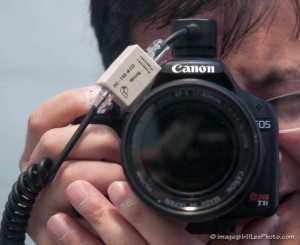 I was going to help shoot my aunt and uncle’s 50th anniversary event. I didn’t really know what would be going on and I thought it might be an opportunity to augment ambient light via a my eTTL flash. I have a 2 ft. long, stretchy off-camera cable Pixel eTTL Off-Camera Shoe Cord
I was going to help shoot my aunt and uncle’s 50th anniversary event. I didn’t really know what would be going on and I thought it might be an opportunity to augment ambient light via a my eTTL flash. I have a 2 ft. long, stretchy off-camera cable Pixel eTTL Off-Camera Shoe Cord (a $20+ replacement for the $65+ Canon OC-E3 “Off Camera Shoe Cord 3”
). But 2–3ft away from the camera was not interesting, so I thought I would do a little hacking to make it easy to move the flash as far away as I would like. Here’s a little “hotel-room hackery” on how I turned my short extension into a modular long extension. The same hack can be applied to a similar Nikon 4765 SC-28 TTL 9-ft. Remote
(or compatible) cord.
 Continue Reading
Continue Reading
Identity & Naming — Setting Up Social Media
A business needs to have an identity—talking-heads call this “branding.” The most important, is its name. Photographers are artists and artists often do not think of themselves business people—even recoiling from the idea. But, even if you are not planning on earning money from your photography, if you want to become recognized for your work, you must create a consistent identity. I am going through the process myself, so I will try to give you some insights into my thought processes.  Continue Reading
Continue Reading
The Magic of Magic Lantern on a Canon dSLR
I finally got to loading the Magic Lantern firmware onto my Canon T1i/500D and I am so excited! Magic Lantern is a firmware add-on for Canon dSLRs that enhances their use. It does not replace the camera’s built-in firmware, so you can use the camera as expected. It can be easily bypassed, too, so you needn’t be afraid to try it out. If I had known how easy this all was, I would have tried it years ago.
Magic Lantern adds capabilities that Canon doesn’t provide, relaxes unnecessary limits, and provides a bunch of convenience features that would take a lot of thought and pushing of buttons to configure. It unlocks advanced features to Canon’s entry- and mid-level dSLRs (currently, T1i/500D, T2i/550D, T3i/600D, 50D, and 60D, and separately 5D Mk II), making them more usable. Arguably, many of the features should have been included in the camera from the factory.
The Magic Lantern web-site has sufficient explanation of installing and using the firmware, but I thought I would lend a bit of personal insight to encourage you to try it.  Continue Reading
Continue Reading
Shutter Speed vs. Aperture; the Creativity Begins
Most people who take pictures are only concerned about shutter speed. A fast shutter speed helps the sharpness of an image due to movement. A fast shutter speed can “stop” action. Consider the following two images:





